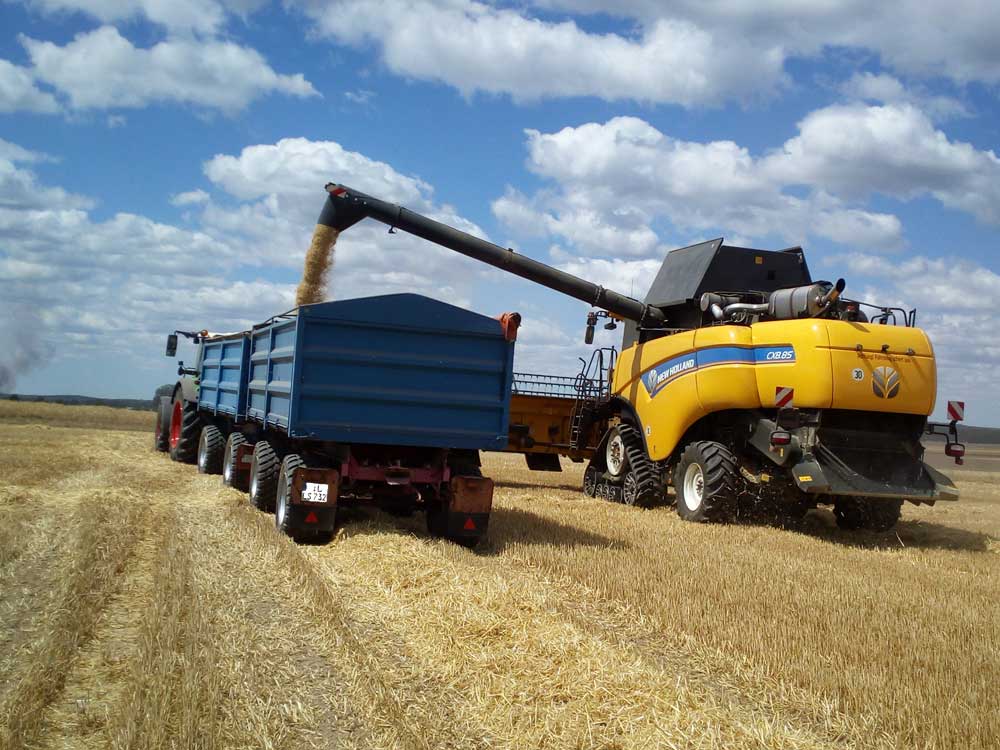How do we reach the consumer?
By Dr Christian Bickert
There are infinite approaches to public relations work – from radio adverts selling the idea of »regional agriculture«, to public panel discussions, yellow vest demos by sugar beet farmers right through to hundreds of »bloggers« (the best known in Germany translating as »Farmer Willie«), all of whom communicate a portrait of progressive farming over Internet and the social media. However, it’s impossible to measure the success of such presentations. There’s no general formula that can be applied and this begs the question as to whether any success at all is achieved. But it’s not all hopeless: there are a few basic moves that can be effective.
Pictures are best of all…. especially moving ones
Agriculture is complicated, and it takes too long to explain the convoluted relationships involved. Those trying to understand the message are often overwhelmed by the complexity. The art of communication must be to reduce wads of facts down to simple messages, most effective when featuring pictures, images that capture the imagination. This is nothing new. In fact, the strategy reaches far back in time to the beginnings of printing. The first mass publications were pamphlets with attention-grabbing graphics and short texts (alone because most people couldn’t even read). While nowadays everyone can read, no one has any longer the time, or takes the time. For decades, advertising has shown the way here: attractive pictures and images with short text passages. A combination that effectively attracts attention. Modern media now extends this formula to include moving pictures. Prof. Dr Matthias Michael, one of the speakers at the German Agricultural Society’s latest winter conference (DLG Wintertagung), sees these as the minimum requirement for future communications. Static text announcements on their own no longer connect with people.
Decisions and action are better than doing nothing
This statement reflects reactions of the »blogger scene«. Short films and photos, a quick commentary on the current themes – rapidly produced and distributed in the social media. Costs involved are low. Often all that’s needed is familiarity with the smartphone. It’s therefore not surprising that young folk mainly use this medium. The advantage is obvious: reaction time to any event is very short and, because individuals are involved, the message is always personalised. And personalised messages are seen by others as genuine and engender trust. This is one of the success recipes of Facebook & Co. But there are only a few bloggers who manage to really influence the general public’s image of agriculture. This alone lies in the numbers involved. For instance, there are around 200 000 farming families in Germany, just to take one country. Potentially, all of them could communicate in this way. On the other hand, there are 2.85 million students plus a few million school pupils in that country alone (and both groups have more time at their disposal than farmers). Problem: only a very few of them are interested in agriculture. But all that’s needed is a fraction of them, enough to represent a mass of activists with the capacity of overwhelming the agri-scene activists. But this doesn’t mean the activists’ work is worthless or hopeless. It does, however, demonstrate how very hard it might be to alter public opinion.
Official groups are good for campaigns but not for quick pictures
Organisations are naturally not so good in distributing rapid news and pictures. Usually, they stick to an agreed approach and even the time spent reaching such an agreement is too long and prevents rapid reaction. Committees are good for campaigns, for conveying in-depth aspects from decision makers, but not for rapid individual action or reaction. Quite apart from this, all farmer organisations are seen as prejudiced and driven by their own respective interests.
In local terms, the newspaper influences the picture of agriculture, at any rate for most. Where agriculture in general isn’t being dealt with, where the focus is on the local situation and where acute problematical cases such as new livestock buildings going up or siting of slaughterhouses, then the local newspaper continues to influence the way things are presented and viewed. Thus, good connections with the editor and staff are keys to communication success here. Required is that the journalist takes the time to acknowledge the farmer’s side of things. Here’s the point where the organisation has the best opportunity. In the Schaumburg district of Germany, for instance, three regional farmer associations levy from their members an extra payment to finance a colleague who does nothing else but look after connections with the press and awake press interest in farming events.
Be kind to your customers
Even if consumers in Berlin chant »Wir haben es satt« (We are fed-up) in an annual ritual*, these people are, in the end, our customers. And no one antagonises their customers. Even when thy trot out hair raising misunderstandings about your production. Also, between »the consumer« and »the farming sector« stand processors and trade. To pillory all these as villains is not always helpful. Even when it’s hard to accept: joining forces with others involved can now and again achieve a better understanding of the whole process. For instance, in the sorrowful theme of male chick shredding. On its own initiative (although not completely disinterested) the German supermarket chain Rewe involved itself in a long overdue solution. And the subject animal welfare is being brought onto the itinerary by retailers too, so that it is not entirely left to one or the other animal protection associations.
*An annual demonstration by protesters against livestock farming held on the first day of the German agricultural fair »Grüne Woche« in Berlin.
Themes set the scene
The way the media presents agriculture features two main themes: reporting on real or presumed scandals and over interesting, mostly however fairly romanticised, activities around the theme nutrition in large urban centres. Probably the best-known subject along the latter lines is urban farming. Over the past two years this has managed to hit the headlines often – even in the specialist farming press. Edging ahead at the moment, though, is »meat« from the fermenter, and out-of-the-ordinary gastronomy concepts with a range of inputs.
However, all the processes involved in the above don’t really serve the broad mass of consumers. They spotlight trends for small circles of consumers (mostly in big cities) and are associated with not even one percent of our total food consumption. However, they are unusual. And behind them stand unusual people, many of them self-promoters with a story to tell: aspects always more interesting for television, newspapers and Internet than reports on an oven roast or curry wurst.
Scandals and shitstorms. How to react?
It’s hard for farmers to present their day-to-day work as a »cool story«. Organic farms have a slight advantage here, their protagonists being happy to accept the positive attributes which incidentally leave their conventional farmer neighbours with the more negative characteristics.
Farmers manage so far to handle the exotic and generally impractical food trends. At worst, the message is only: »we are better«. But what do we do about the scandals, or at least the cases seen by the public as such?
Here, every counterargument fails, as does every explanation added after the event. Dirt sticks, as the saying goes. And this applies to scandal reports too. In the networks there’s no way of stopping the news spreading. Even large-scale firms have little defence against a so-called »shitstorm«. Often the best course is to duck for cover and not even start to take up the fight on interpretation grounds. We are in the real world here: where every counterargument simply stokes the »culture of outrage«.
Summary
There’s no silver bullet for publicity work. At any rate, no specific route was identified by the Impulse Forum at the DLG Wintertagung. However, there are many good approaches that can suit the individual farm or farmer. As a sector, agriculture should not expect miracles, but certainly some success in the one or other case. To quote Jutta Zeisset, an online marketing manager speaking on this subject in Hanover: One must react personally and not wait until someone else does.






